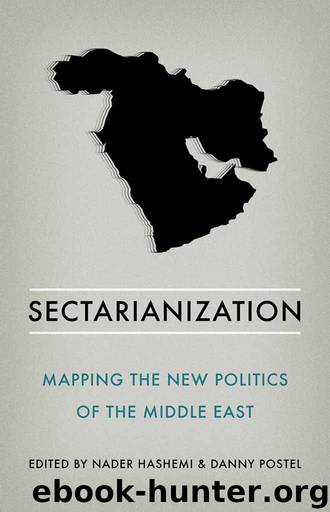Sectarianization by Hashemi Nader; Postel Danny;

Author:Hashemi, Nader; Postel, Danny;
Language: eng
Format: epub
Publisher: Oxford University Press
Published: 2017-01-15T00:00:00+00:00
Transformative Impact of Collective Action
When youth activists and others converged on protest spaces throughout Yemen in the winter and spring of 2011, their demands were articulated against the Salih regime, but also against the formal opposition parties that they increasingly came to characterize as a central component of the regime itself. Younger Islahis played an important role in protest activity, and through this practice came into sustained contact with differently situated Yemenis, including Houthis. In a series of workshops and trainings with youth activists from across the political spectrum that I attended between 2011 and 2013, I observed the effects of this collective action as distinct from the intra-partisan dynamics observable among JMP leaders.31 In interviews, activists cited the quotidian work of maintaining protest spaces as constitutive of a shared activist identity that was deeply republican in its focus. While there was no broad agreement on the question of secularism among these activists, there was a clear rejection of sectarianism (expressed as ta’ifiyya, madhabiyya, or even sometimes ‘unsuriyya),32 and there were moments of explicit political coordination between Houthi and Islahi youth that were characteristic of the potential of both political movements to advance republican aims within the parameters of their (different) Islamisms. While the two groups were undecided on the question of federalism, they joined together to articulate a notion of a “civil state” consistent with a modernist reading of shari‘a. They did so in way that was premised on republican notions of political accountability, popular sovereignty, and rule of law.
This disjuncture between a convergent Islamist republicanism among Islahi and Houthi youth and emergent tension between senior leaders of both groups (detailed below) is consistent with what Atiaf al-Wazir has characterized as “the introduction of youth as new political actors” forged through the process of collective action.33 Al-Wazir claims that in relation to other youth-led initiatives characteristic of this “exceptional time,” such convergence:
may not be sustainable over the long term and will remain subject to elite dynamics. Still, the urge for self-realization and the vision of a just social order that defined the spirit of 2011 … will create a permanent repository of resistance and repertoires of contention with which political elites will have to reckon.34
The argument here is that the institutional misrecognition produced by the transitional framework and the discursive framing of the 2015 war have been just such a reckoning, albeit with some corrosive effects.
Download
This site does not store any files on its server. We only index and link to content provided by other sites. Please contact the content providers to delete copyright contents if any and email us, we'll remove relevant links or contents immediately.
| Arms Control | Diplomacy |
| Security | Trades & Tariffs |
| Treaties | African |
| Asian | Australian & Oceanian |
| Canadian | Caribbean & Latin American |
| European | Middle Eastern |
| Russian & Former Soviet Union |
The Secret History by Donna Tartt(18867)
The Social Justice Warrior Handbook by Lisa De Pasquale(12143)
Thirteen Reasons Why by Jay Asher(8804)
This Is How You Lose Her by Junot Diaz(6805)
Weapons of Math Destruction by Cathy O'Neil(6156)
Zero to One by Peter Thiel(5695)
Beartown by Fredrik Backman(5611)
The Myth of the Strong Leader by Archie Brown(5429)
The Fire Next Time by James Baldwin(5253)
How Democracies Die by Steven Levitsky & Daniel Ziblatt(5135)
Promise Me, Dad by Joe Biden(5090)
Stone's Rules by Roger Stone(5029)
A Higher Loyalty: Truth, Lies, and Leadership by James Comey(4853)
100 Deadly Skills by Clint Emerson(4846)
Rise and Kill First by Ronen Bergman(4706)
Secrecy World by Jake Bernstein(4654)
The David Icke Guide to the Global Conspiracy (and how to end it) by David Icke(4629)
The Farm by Tom Rob Smith(4443)
The Doomsday Machine by Daniel Ellsberg(4421)
